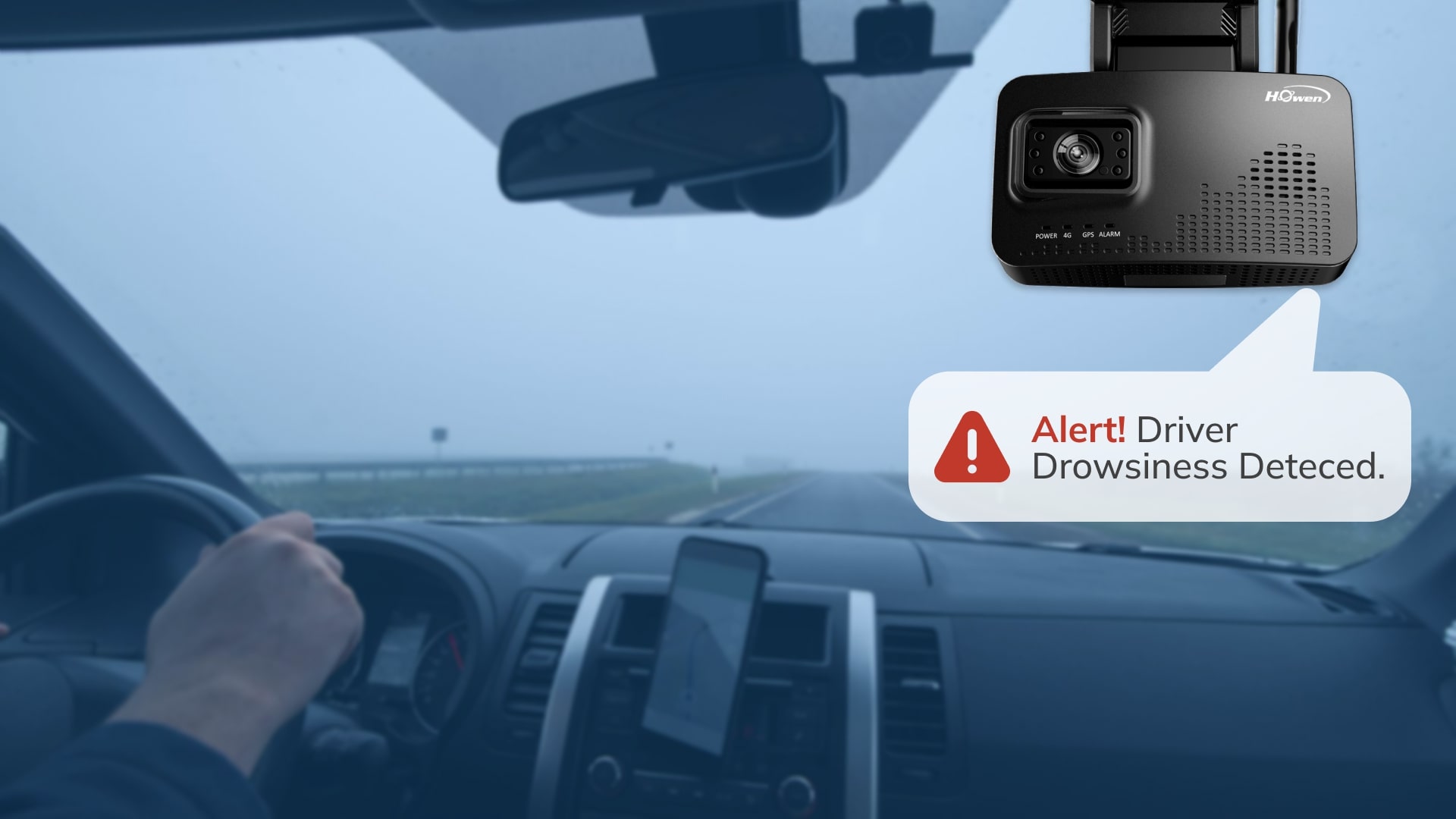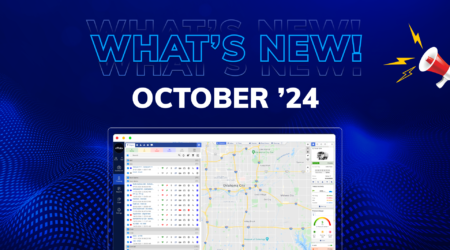Video Telematics: What It Is and How It Works ?
What is Video Telematics?
Video telematics is a technology that combines video recording and data collection to provide an extensive view of a vehicle’s operations. Video telematics systems are equipped with cameras that capture footage of the fleet’s surroundings and driver’s actions. The systems also collect data such as speed, location, and vehicle diagnostics. This data is transmitted in real-time to a centralized platform, where it can be analyzed and used to make informed decisions about fleet operations.
Video telematics is a rapidly growing technology transforming how fleet operators manage their fleets and drivers. Video telematics combines video recording, data collection, and real-time monitoring to provide a comprehensive view of a fleet’s operations. By using video telematics, fleet operators can reduce their insurance costs & improve their overall fleet operations.
How does Video Telematics Works?
Video telematics works by using cameras installed on vehicles to record footage of the driver, the road, and the vehicle’s surroundings. The video footage is combined with telematics data, such as GPS location, speed, and acceleration, to provide insights into driver behavior and vehicle performance.
The process typically involves the following steps:
Camera Installation
The first step in implementing video telematics is to install cameras on vehicles. The cameras can be mounted on the dashboard, the windshield, or the exterior of the vehicle. Some systems use multiple cameras to provide a 360-degree view of the vehicle’s surroundings.
Video Recording
Once the cameras are installed, they begin recording video footage of the road, the driver, and the vehicle’s surroundings. The video footage is typically stored locally on an onboard device or in the cloud.
Telematics Data Collection
At the same time, telematics data is collected from the vehicle’s sensors, such as GPS location, speed, acceleration, and braking. This data is transmitted in real-time to a cloud-based platform.
Data Integration and Analysis
The video footage and telematics data are then integrated and analyzed using artificial intelligence and machine learning algorithms. The algorithms analyze the data to identify patterns and insights related to driver behavior, vehicle performance, and safety.
Driver Coaching and Alerts
The results of the analysis are then presented to fleet managers in a dashboard or mobile app. The system can also provide real-time coaching to drivers to help them improve their driving skills and reduce risky behavior. Additionally, the system can send alerts and notifications to fleet managers when risky driving behavior is detected, such as speeding or hard braking.
Continuous Improvement
Over time, the video telematics system can be used to continuously improve driver behavior and vehicle performance. Fleet managers can use the data to identify areas for improvement, implement new training programs, and optimize routing to reduce fuel consumption and improve efficiency.
How ADAS and DMS Can Improve Fleet Safety?
Advanced driver assistance systems (ADAS) and driver monitoring systems (DMS) are two key components of video telematics systems. ADAS uses sensors and cameras to detect potential hazards and alert drivers to take corrective action. DMS uses cameras and sensors to monitor driver behavior and alert drivers if they are exhibiting unsafe driving behavior, such as drowsiness or distraction.
ADAS and DMS can help prevent accidents and reduce insurance costs for fleet operators. Insurance companies are increasingly offering discounts to fleet operators that use video telematics systems with ADAS and DMS, as they have been shown to reduce the likelihood of accidents and improve driver behavior.
How our Video Telematics software can give you safety?
Our Video telematics systems provide real-time data on vehicle location, speed & diagnostics, which can be used to optimize routes and reduce idle time. This can result in lower fuel costs and increased productivity for fleet operators.
Live streaming
Live streaming allows fleets owners to keep a real-time eye on their fleets and drivers. This can be very helpful for businesses that must monitor their fleets for safety reasons or ensure timely deliveries. It also enables fleet owners to detect and respond to issues as they occur. For example, if a fleet driver is involved in an accident or breaks down, the fleet owner can quickly dispatch assistance.
Collision Detection
In video telematics, collision detection refers to the technology and algorithms used to automatically detect and capture video footage of vehicle collisions or accidents. Video telematics systems with collision detection capabilities use a combination of sensors, cameras, and machine learning algorithms to monitor the vehicle’s movements and detect any sudden changes in speed, direction, or impact.
Remote Viewing
When a collision is detected, the video telematics system automatically saves and uploads the video footage captured by the cameras, providing valuable data for accident investigation and claims processing. The system can also trigger alerts or notifications to fleet managers, safety managers, or emergency services, allowing for a rapid response to the incident.
Remote viewing in video telematics refers to the ability to view live or recorded video footage from a vehicle’s cameras from a remote location. Video telematics systems with remote viewing capabilities allow fleet managers, safety managers, and other authorized personnel to access video footage in real-time, regardless of their location.
Remote viewing is typically enabled through a secure web-based platform or mobile app, providing a convenient and flexible way to monitor vehicle and driver behavior. This feature allows fleet managers and safety managers to keep track of their vehicles and drivers, view real-time events, and take immediate action if necessary.
History Playback
History playback is another important feature of video telematics technology that can help you to optimize fleet management. With history playback, fleet owners can access video footage of previous vehicle journeys. This can be useful for reviewing routes, identifying potential safety hazards, and analyzing driver behavior. It is also helpful to respond to disputes or insurance claims. By reviewing video footage, vehicle owners can determine the cause of an accident or incident, helping to resolve disputes efficiently.
Event Clips
Event clips are short video clips that capture key events, like harsh braking, sudden acceleration, and collisions. These clips are automatically generated by the video telematics system. These event clips are helpful for the fleet owner due to they provide a snapshot of what happened during a specific event. This can be useful for coaching drivers and improving safety, and responding to accidents.
Driver Event Report
Driver event reports are detailed reports that provide insights into driver behavior. These reports include information about harsh braking, speeding, and other driving behaviors. Also, it can be used to identify drivers who need additional training or coaching. They can also be used to reward drivers who consistently exhibit safe driving behaviors.
Driver Violation Report
It is focused specifically on violations of company regulations. For example, if a driver is caught using their phone while driving or failing to wear a seatbelt, a violation report can be generated. It is also used to identify drivers who may need additional training or coaching.
Driver Performance
Driver Performance By analyzing driver performance, fleet managers can identify areas where drivers can improve like fuel efficiency, safety, and compliance. It can be used to create essential training programs that can help drivers improve their skills & behaviors. This can lead to improved safety, reduced costs, & increased efficiency.
24X7 Surveillance
It can be especially helpful for businesses that must monitor their fleets for safety reasons or ensure timely deliveries. 24X7 surveillance can be accessed through a web-based interface or a mobile app. This makes it convenient for fleet managers to check in on their fleets from anywhere. It can also help businesses respond quickly to issues as they occur, such as accidents or breakdowns.
One of the biggest benefits of video telematics for fleet operators is the potential to reduce insurance costs. Insurance companies are increasingly offering discounts to fleet operators that use video telematics systems. This reduces the likelihood of accidents and improves driver behavior.
Conclusion:
In conclusion, video telematics is a rapidly growing technology that is transforming the way fleet owner manage their vehicles and drivers. Video telematics technology offers a range of features that also help businesses optimize their fleet management. Live streaming, history playback, event clips, driver event reports, driver violation reports, driver performance analysis, and 24X7 surveillance all contribute to enhanced safety, reduced costs, and increased efficiency. By leveraging video telematics technology, businesses can gain a competitive advantage and also improve their bottom line.





